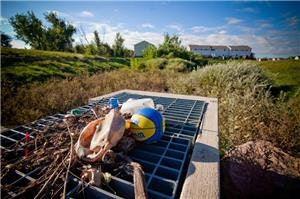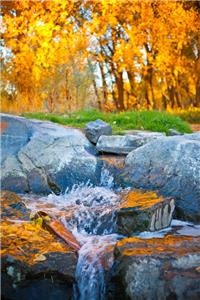Help Prevent Pollution
Development Of Vacant Land And The Expansion Of Existing Buildings Helps To Fuel The Economic Engine Of A Community.

When development occurs, natural areas are covered with impervious surfaces, preventing stormwater from soaking into the ground. The creation of impervious surfaces that accompanies urbanization significantly affects how water moves above and below ground during storms. These impervious surfaces impact the quality of stormwater, and the condition of our streams and lakes. Stormwater pollution is rapidly growing in importance as a national environmental issue. According to the Environmental Protection Agency (EPA), stormwater is the leading cause of water pollution in the Nation. Stormwater pollution occurs when rain or snow melt flows over streets and picks up trash, oil, dirt, and other pollutants as it travels. These pollutants are carried to the storm drainage system, which drains directly into our local creeks, untreated. The good news is we can do a lot to prevent water pollution by making small changes in our everyday lives. SEMSWA is committed to promoting behavior change though increased public awareness of local water quality problems associated with stormwater runoff. We accomplish this by creating educational materials, forming partnerships, and conducting outreach events.
KNOW THE RULES

The storm drainage system is designed to convey rain water to our local waterbodies. In order to prevent stormwater pollution, residents and business must be aware of what is allowed and what is not allowed in the storm drain system.
GET EDUCATED
An effective way to manage stormwater pollution is through the use of pollution control measures, often called Best Management Practices (BMPs). BMPs can be structural (such as roofing or diversion ditches) or non-structural (such as education or training). The links below contain simple steps you can take as a resident, business, or municipal operator to prevent water pollution:
OUTREACH
SEMSWA strives to increase awareness of water quality issues in part by conducting outreach events and programs, such as Storm drain stenciling "No Dump" or "Drains to Creek" labels and the Hazardous Waste Collection program.
PARTNERSHIPS
SEMSWA and its partners engage in watershed issues related to water quality in the form of meetings, conferences, and outreach events. Please see our partners’ websites for more information.
- Cherry Creek Stewardship Partners (CCSP)
- Cherry Creek Basin Water Quality Authority (CCBWQA)
- Cooperative for Local Environmental Awareness and Responsibility (CLEAR)
- Stormwater Permittees for Local Stream Health (SPLASH)

